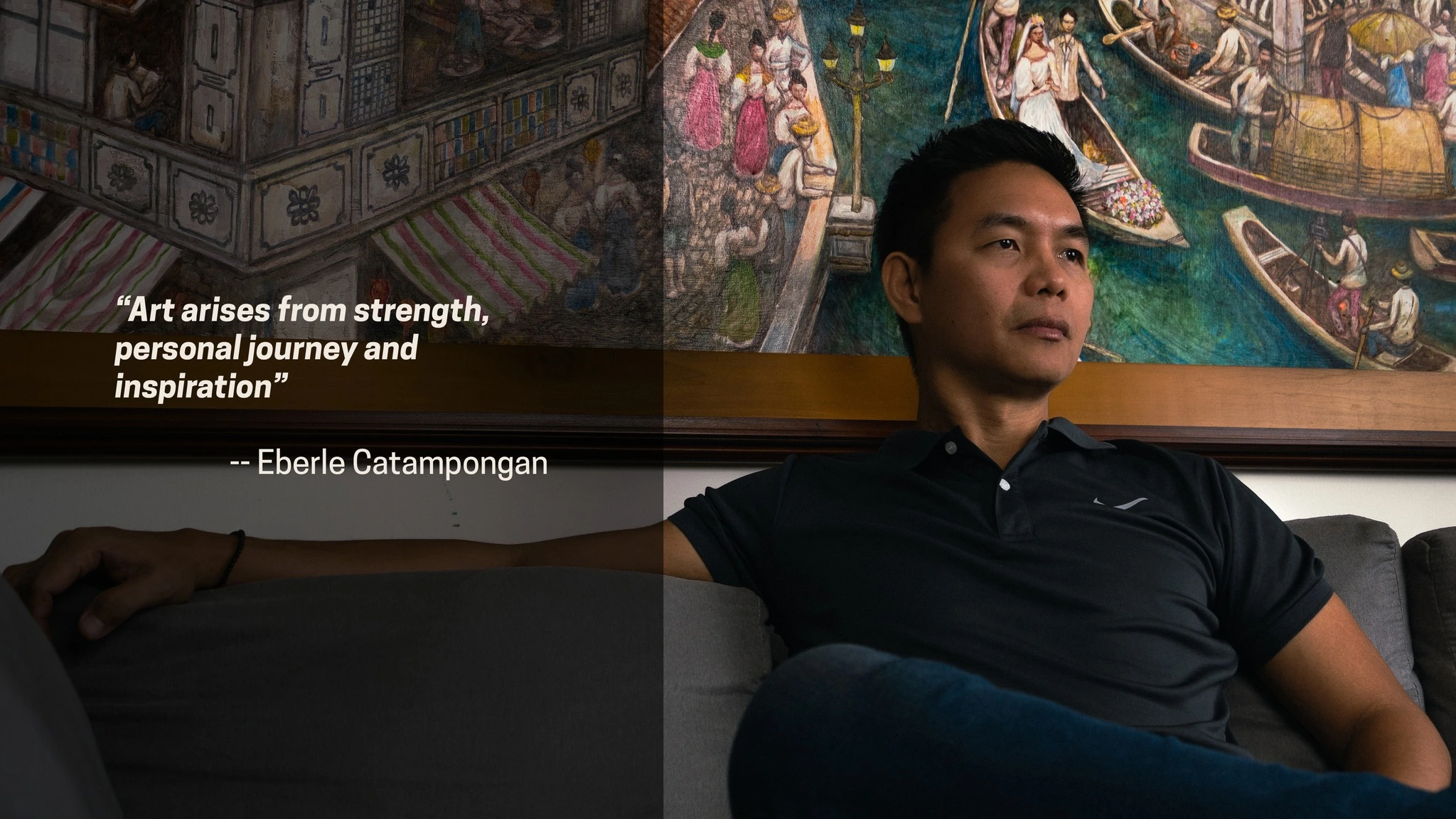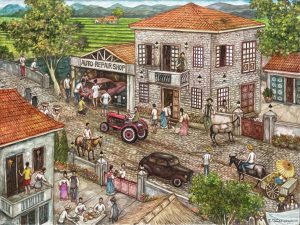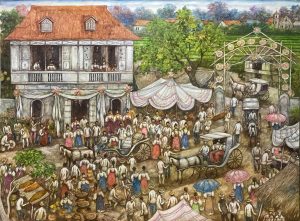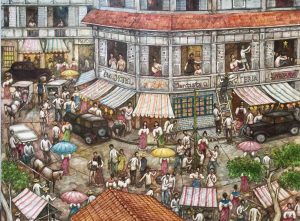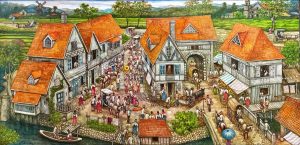Eberle Catampongan’s was trained by his father in law, the late Antonio “Tony” Mahilum. The subject, the color palette, the atmosphere of Manila at the turn of the century stares back at the viewer in quite a grand scale.
Large artworks are spacious. There are thousands of elements in there yet far from being contested. It’s the warm brown that creates open spaces inside the painting. Giving us, the viewer just a bit of space to enter the painting, and get lost in whatever is happening inside the confines of the canvas.
Every corner, every part of the painting contains a short story. There’s a lot of commerce going on in the market scene. Amidst the sweet noise of the horseshoe against cobbled streets, the passengers enjoy the largely questionable-truth stories of their kalesa driver. Hence the coined word, “kwentong kutsero’.
The cascos or large bancas that also served as dwelling, traverse the very busy Pasig River under what is most probably the Bridge of Spain. A river so clean that children dive in. In Rizal’s novel, secluded portions of the Pasig had crocodiles.
And there is the Harana. A forgotten act of courtship, love and affection expressed through heartfelt serenades under the moonlit sky.
Does the artist use his art to escape the realities of modern life? Definitely not, with a bit of humor, many modern frowned upon stories or events, are sneakily inserted in the paintings. Adultery, hold-ups in the tram, lover’s quarrels, forbidden trysts, they’re all there. Half the fun is looking for these Easter eggs.
And so the question remains. Is this a visionary work of art?
The paintings are dreams. They are pictures of an ideal life set two centuries ago. They are not ours or the rest of mankind’s fate of the future.
Can we ever turn back time? Can we bring back the old charming life depicted in these beautiful paintings? Certainly not. But it tugs us deep in our hearts, mind, soul and subconscious. Awakening this impulse to yearn for a simple Filipino life that is far away from today’s reality. It makes us wonder what it was really like in the 1800’s. For now we will have to settle for moments with these paintings in utter blissful silence.
